
Theodor Seuss Geisel was an American children's author and cartoonist. He is known for his work writing and illustrating more than 60 books under the pen name Dr. Seuss. His work includes many of the most popular children's books of all time, selling over 600 million copies and being translated into more than 20 languages by the time of his death.
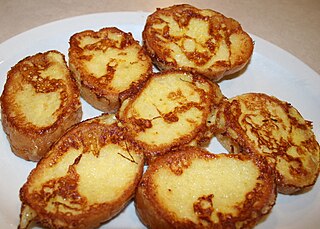
French toast is a dish of sliced bread soaked in beaten eggs and often milk or cream, then pan-fried. Alternative names and variants include eggy bread, Bombay toast, gypsy toast, and poor knights (of Windsor).
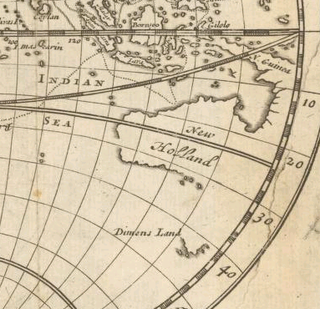
Lilliput and Blefuscu are two fictional island nations that appear in the first part of the 1726 novel Gulliver's Travels by Jonathan Swift. The two islands are neighbours in the South Indian Ocean, separated by a channel 800 yards (730 m) wide. Both are inhabited by tiny people who are about one-twelfth the height of ordinary human beings. Both are empires, i.e. realms ruled by an emperor. The capital of Lilliput is Mildendo. In some pictures, the islands are arranged like an egg, as a reference to their egg-dominated histories and cultures.
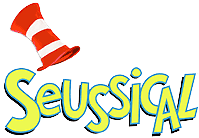
Seussical is a musical comedy by Lynn Ahrens and Stephen Flaherty, based on the many children's stories of Dr. Seuss, with most of its plot being based on Horton Hears a Who!, Gertrude McFuzz, and Horton Hatches the Egg while incorporating many other stories. The musical's name is a portmanteau of "Seuss" and the word "musical". Following its Broadway debut in 2000, the show was widely panned by critics, and closed in 2001 with huge financial losses. It has spawned two US national tours and a West End production, and has become a frequent production for schools and regional theaters.

Green Eggs and Ham is a children's book by Dr. Seuss. It was published by the Beginner Books imprint of Random House on August 12, 1960. The book follows Sam-I-am as he follows an unnamed man, repeatedly asking him if he would like to try some green eggs and ham before the man eventually tries it and likes it. Seuss began writing Green Eggs and Ham after his editor Bennett Cerf bet him $50 that he could not write an engaging children's book with a vocabulary of 50 words. Finding the challenge difficult, Seuss used notes, charts, and checklists to keep track of his progress. The book covers themes of conflict between individuals, though Seuss has said that it lacks any deeper meaning. Green Eggs and Ham was widely praised by critics for its writing and illustration, and challenge of writing a book in 50 words is regarded as a success. The book has been the subject of multiple adaptations, including a television series of the same name in 2019.

The Sneetches and Other Stories is a collection of stories by American children's author Dr. Seuss, published in 1961. It is composed of four separate stories with themes of tolerance, diversity, and compromise: "The Sneetches", "The Zax", "Too Many Daves", and "What Was I Scared Of?". Based on an online poll, the National Education Association listed the book as one of its "Teachers' Top 100 Books for Children". In 2012 it was ranked number 63 among the Top 100 Picture Books in a survey published by School Library Journal – the fifth of five Dr. Seuss books on the list.
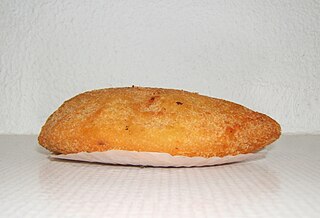
A rissole is a small patty enclosed in pastry or rolled in breadcrumbs, usually baked or deep fried. The filling has savory ingredients, most often minced meat, fish or cheese, and is served as an entrée, main course, or side dish.

Oh Say Can You Say? is a children's book written and illustrated by Theodor Geisel under the pen name Dr. Seuss, and published in 1979 by Random House. It is a collection of 22 tongue-twisters. It was Dr. Seuss's last beginner book to feature his own illustrations.
Zook can refer to the following:

In Search of Dr. Seuss is a 1994 American television film chronicling the adventures of a news reporter, Kathy Lane, who enters the world of Dr. Seuss by opening a magical book. Also starring are Matt Frewer, Christopher Lloyd, Andrea Martin, David Paymer, Patrick Stewart, Andraé Crouch, Robin Williams and Eileen Brennan.
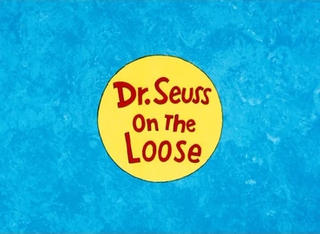
Dr. Seuss on the Loose is an American animated musical television special, first airing on CBS on October 15, 1973, and was sponsored by Nestlé. The special is hosted by The Cat in the Hat, who introduces animated adaptations of the Dr. Seuss stories The Sneetches, The Zax and Green Eggs and Ham. Allan Sherman reprised his role as the voice of The Cat in the Hat from the 1971 television special, which marked his final role prior to his death on November 20, 1973. The special became a popular annual repeat for most of the decade until its last CBS showing on July 12, 1979.
Pontoffel Pock, Where Are You? is an animated musical television special written by Dr. Seuss, directed by Gerard Baldwin, produced by DePatie–Freleng Enterprises, and completed in 1979 but first aired on ABC on May 2, 1980. This was one of the final productions done at DePatie–Freleng as the studio would be sold to Marvel Comics and become Marvel Productions in 1981. The songs are by Sesame Street composer Joe Raposo.
In psychoanalysis, the narcissism of small differences is the idea that the more a relationship or community shares commonalities, the more likely the people in it are to engage in interpersonal feuds and mutual ridicule because of hypersensitivity to minor differences perceived in each other. The term was coined by Sigmund Freud in 1917, based on the earlier work of English anthropologist Ernest Crawley. Crawley theorized that each individual is separated from others by a taboo of personal isolation, which is effectively a narcissism of minor differences.
Richard H. Minear is a retired Professor of History at the University of Massachusetts Amherst. He taught a survey course of Japanese history and a Hiroshima seminar. Minear got his Ph.D. from Harvard in 1968. He is best known for his book about the Tokyo War Crimes Trials, Victors' Justice, He has lived in Japan for many years and translated Japanese works into English.
Horton Hears a Who! is a 1970 American animated television special based on the 1954 Dr. Seuss book of the same name, Horton Hears a Who! It was produced and directed by Chuck Jones who previously produced the Seuss special How the Grinch Stole Christmas! for MGM Television and first broadcast March 19, 1970 on CBS. The special contains songs with lyrics by Seuss and music by Eugene Poddany, who previously wrote songs for Seuss' book, The Cat in the Hat Song Book.

Breaded cutlet or braised cutlet is a dish made from coating a cutlet of meat with breading or batter and either frying or baking it.

The political messages of American children's author and cartoonist Theodor Seuss Geisel, best known as Dr. Seuss, are found in many of his books. Seuss was a liberal and a moralist who expressed his views in his books through the use of ridicule, satire, wordplay, nonsense words, and wild drawings to take aim at bullies, hypocrites, and demagogues.

Green Eggs and Ham, also known as Green Eggs and Ham: The Second Serving for its second and final season, is an American animated comedy adventure television series based on the 1960 Dr. Seuss book of the same title and created by Netflix.
Breakfast, the first meal of the day eaten after waking from the night's sleep, varies in composition and tradition across the world.















